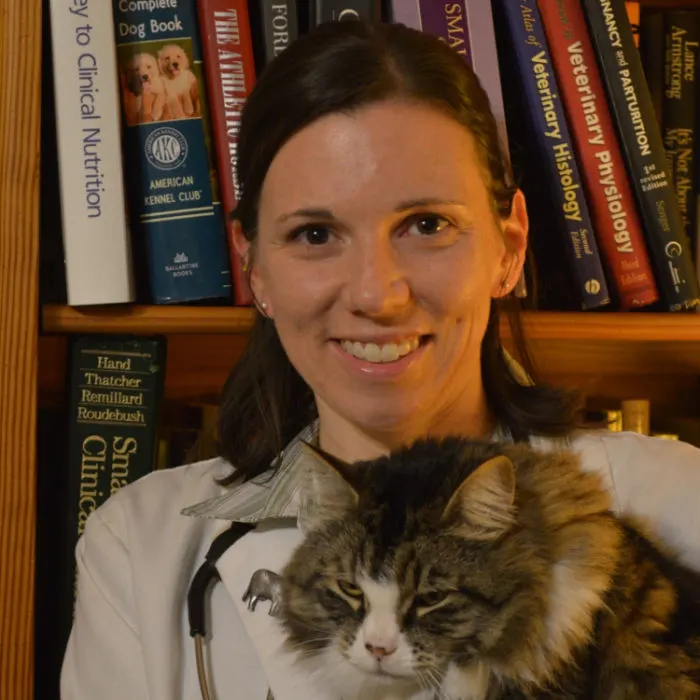Guinea pigs are one of the world’s popular pets, with these social animals bringing joy into the lives of many. If you’re looking to become one of the many cavy parents in the world, there are a few things you’ll need to learn. This includes knowing when guinea pigs are fully grown.
Knowing this will help you support your guinea pig and all their needs at various stages of their life: from knowing what size cage to buy for a single guinea pig or a pair, how many cavies will fit in a cage, to the type of solid food they should eat.
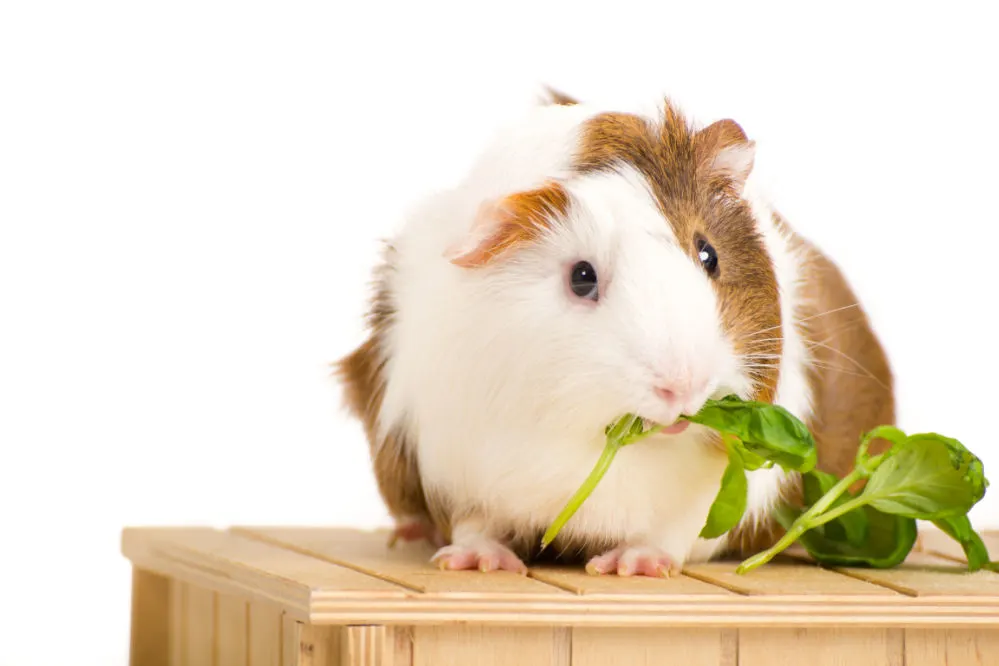
Whether you’re an aspiring cavy parent or already have a guinea pig and want to know what size it might reach, this guide will answer all your questions.
How big is a full-grown guinea pig?
In case you didn’t already know, there are many different breeds of guinea pigs. Add to that the fact that male and female cavies have differing sizes, and it’s clear there isn’t a straightforward answer here.
Regardless of these variations, there are averages you can look at to predict a guinea pig’s full size. Typically, guinea pigs at full growth are often measured between eight and 12 inches (20 to 30 cm) in length.
As for weight, the typical adult guinea pig weighs around 2.6 pounds (1,200 g). Popular breeds such as the American guinea pig measure a maximum of nine inches (22 cm) in length but can weigh up to three pounds (1,361 g).
When does a guinea pig stop growing?
Baby cavies have a rapid growth rate that sees them grow quickly before it stops. Seeing a guinea pig double in weight and length in just two months is not shocking.
Typically, a guinea pig has reached maturity at 14 months, when they are at their final size.
However, don’t be alarmed to see your furry friend stop growing earlier or later. No two guinea pigs are the same, so there are variations that depend on a variety of factors.
Note: Despite reaching maturity at 14 months, guinea pigs enjoy an average lifespan of five years, although some may reach eight years.
Factors affecting the different sizes of guinea pigs
If you’re seeing an irregular growth rate in your cavy, several factors may be the reason behind the irregularity. Here are just a few of them:
Guinea pig breed
As mentioned earlier, there’s a long list of guinea pig breeds. Some are officially recognized, although numbers often differ from association to association. For instance, the American Cavy Breeders Association recognizes 13 breeds, while the British Cavy Council recognizes just over 50 breeds.
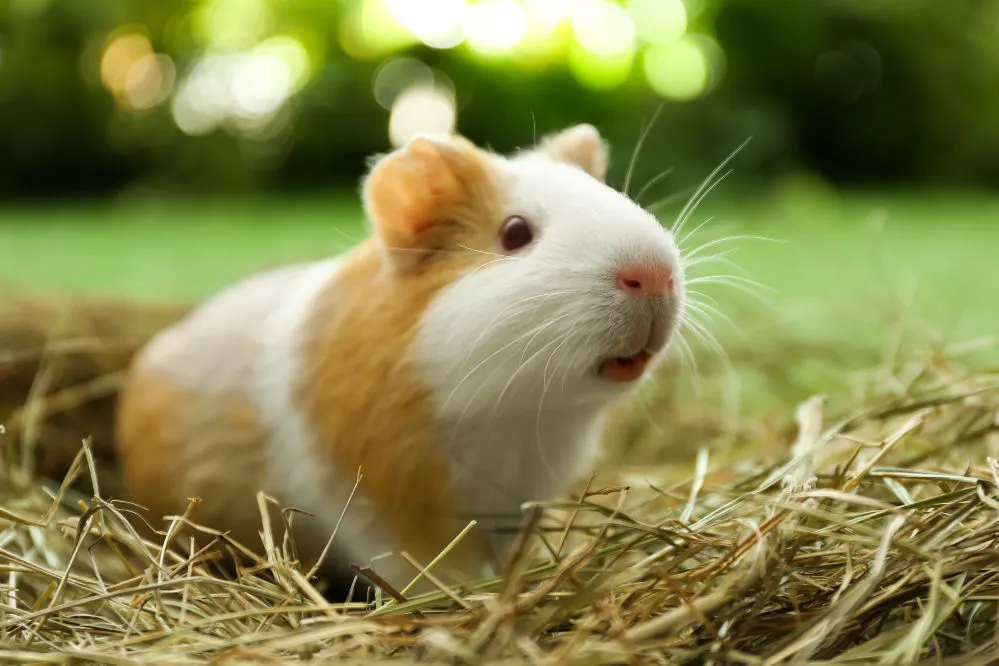
Regardless of which association you believe, there’s one constant between the two: the size of guinea pigs differs by breed. There are cavies that are often on the big side, with others on the smaller side.
For instance, the biggest guinea pig in the world is the Rex guinea pig. This big guinea pig typically fills out at 17 inches (43 cm) and three pounds (1.36 kg). Other breeds that are on the larger side include the Peruvian, Silkie, and Abyssinian guinea pigs. These generally grow above 12 inches (30.5 cm).
Conversely, you have the American guinea pig, the world’s smallest cavy. This breed usually tops out at nine inches (22 cm) but can weigh around three pounds (1.36 kg). If you’re a fan of the smaller guinea pigs, you can also consider the Texel or the skinny pig.
Guinea pig gender
Another factor that will play a part in how big your guinea pig gets will be whether they’re male or female. Like humans, male guinea pigs tend to be bigger than female guinea pigs across all breeds.
Male guinea pigs (boars) end up at an average weight of 2.6 pounds (1,100 g). Male cavies often measure between eight and 12 inches (20 to 30 cm) in length.
Female guinea pigs (sows) typically weigh between one and a half to two pounds (700 g to 900 g). As for length, the average sow will be between eight and 10 inches (20 to 25 cm).
While this is good to remember, you’ll also need to be aware that there is a size difference depending on breed, regardless of gender.
How to help your guinea pig reach their full size
Now that you know about the average guinea pig size, they’ll need your help to get there fully. As fragile critters, they’ll need you to care for them well so they reach their full potential.
Here are a few ways to care for your guinea pig so they grow healthy and strong.
Ideal diet
Arguably the most important thing that will play a role in a guinea pig’s full size is its diet. Cavies that are well-fed with all the nutrients necessary for a long, healthy life are more likely to reach their full size than those that aren’t.
While they’re herbivores and the food they eat doesn’t really change much from birth to maturity, they do have different needs at different ages.
Young guinea pigs’ ideal diet
Guinea pigs are considered young from birth until they’re six months old, although the sows (female guinea pigs) can reach sexual maturity at just six weeks of age. This stage is when they need the most calories and nutrients. Guinea pigs grow rapidly and require food that will match their growth so it isn’t stunted or rushed.
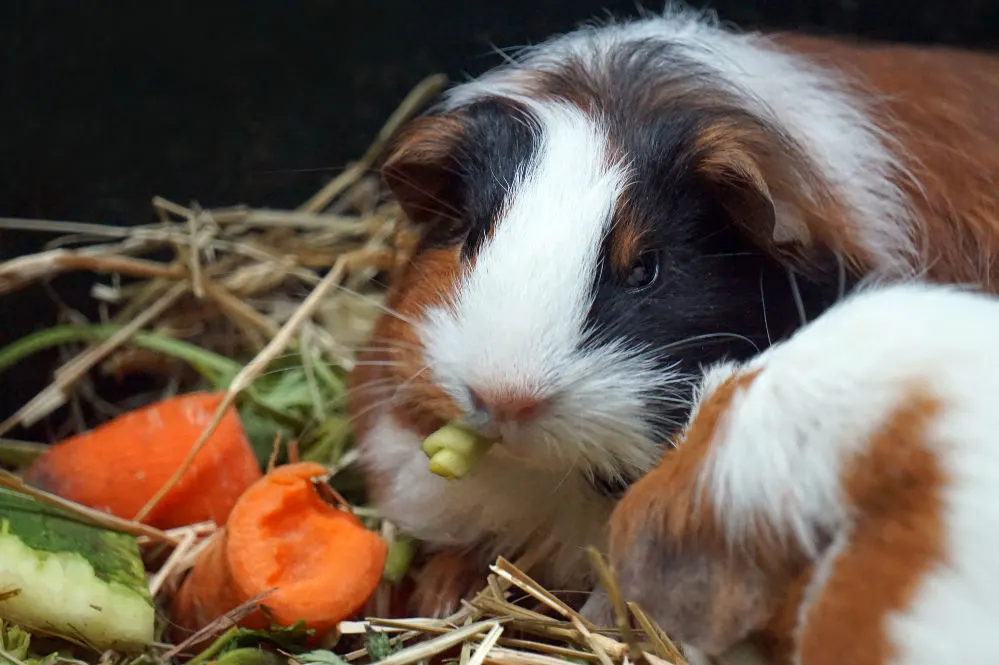
As newborn guinea pigs, you’ll need to feed your furry friend a lot of hay, which contains all the necessary nutrients. While there’s a range of options out there, Timothy hay, oat hay, and orchard grass hay reign supreme for baby guinea pigs.
You can also give your guinea pig some alfalfa hay during their first six months to offer them extra calcium and protein. However, this shouldn’t be part of their regular diet, especially once they’re over six months old. Alfalfa hay is rich in calcium; too much calcium can lead to issues like kidney and bladder stones, which can be fatal.
Adult guinea pigs’ ideal diet
After six months, your guinea pig starts entering their adult phase, which extends beyond its size maturity. While they stop growing at 14 months of age, they still need nutrients to stay healthy.
As adults, the primary type of hay you need to feed your cavy is Timothy hay. This kind of hay is rich in protein and fiber. Orchard grass and oat hay are still okay for adult guinea pigs as they don’t have too much calcium content. Just beware not to offer them alfalfa hay as this can lead to the previously-mentioned health issues.
Vegetables and fruits
In addition to hay, you’ll need to give your cavies a healthy dose of leafy vegetables as an additional food source. These give guinea pigs much-needed nutrition, as they can’t produce their own vitamin C. You can feed them vegetables like lettuce, broccoli, and kale a few times a week. Just be sure you know what kind of lettuce guinea pigs can eat before feeding your cavy.
Likewise, you can feed your cavy fruits to supplement their hay diet. There are several fruits guinea pigs can eat, including kiwis, bananas, apples, and more. These also offer an incredible amount of vitamin C, calcium, protein, and fiber, essential to their growth.
Of course, they’ll need fresh water daily, regardless of age. A typical guinea pig will need around 2.7 to 3.4 ounces (80 to 100 ml) of water per day. Just be sure to get a dispenser with a metal tube so they don’t chew away at it.
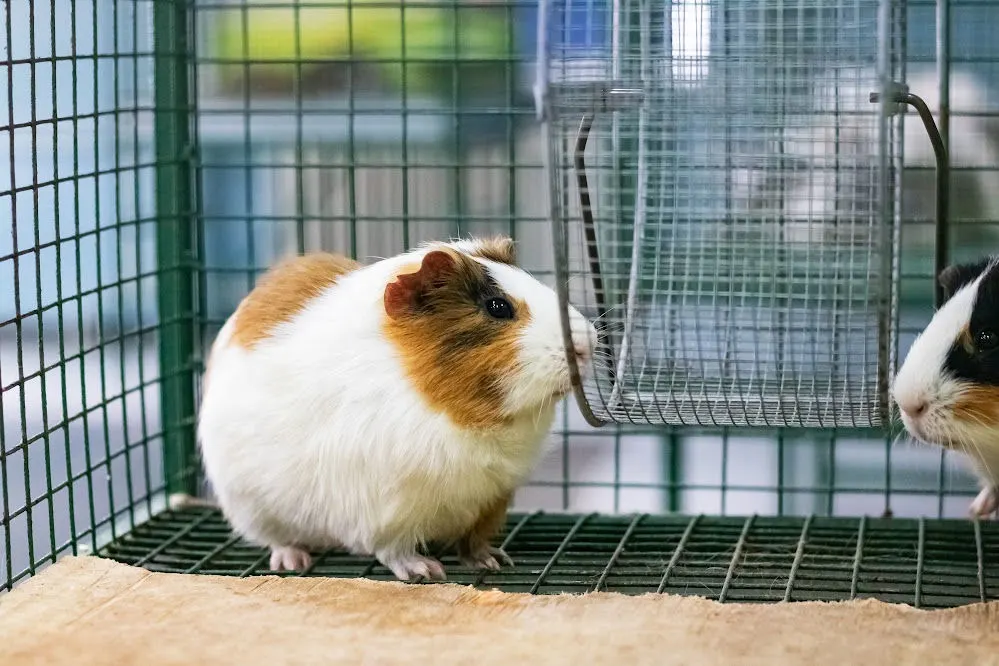
Clean environment
While this may be obvious to all pet parents, a clean environment is especially important for guinea pigs. As they’re often kept in the same cages for long periods, their places need to be squeaky clean.
If you have a guinea pig living in a dirty environment, this opens them up to a variety of diseases, like pneumonia. In case they contract these diseases, they may have fatal consequences that mean they don’t even get the chance to reach their full size.
Social and exercise needs
One of the main reasons behind the popularity of guinea pigs is that they’re friendly critters that love their humans. As a result, they need a lot of social interaction to remain healthy. While you can help, you’d be better served by getting another guinea pig buddy for your furry friend.
In the wild, guinea pigs often live in herds, and this social need extends to domesticated cavies. A study found that a male guinea pig lost about 20% of its weight after prolonged isolation.
In addition, guinea pigs need lots of exercise and physical stimulation to be healthy. This means you’ll need to play with the cavy or place various toys in its cage. This includes chew toys, a fun plastic tunnel, and a branch ball, among the best toys.
Handle them gently
As they’re small, fragile animals, guinea pigs need to be handled with care. If you don’t, you risk injuries to their bodies, which can stunt growth. Or worse, they could suffer fatal injuries, which will also mean they never reach their full potential.
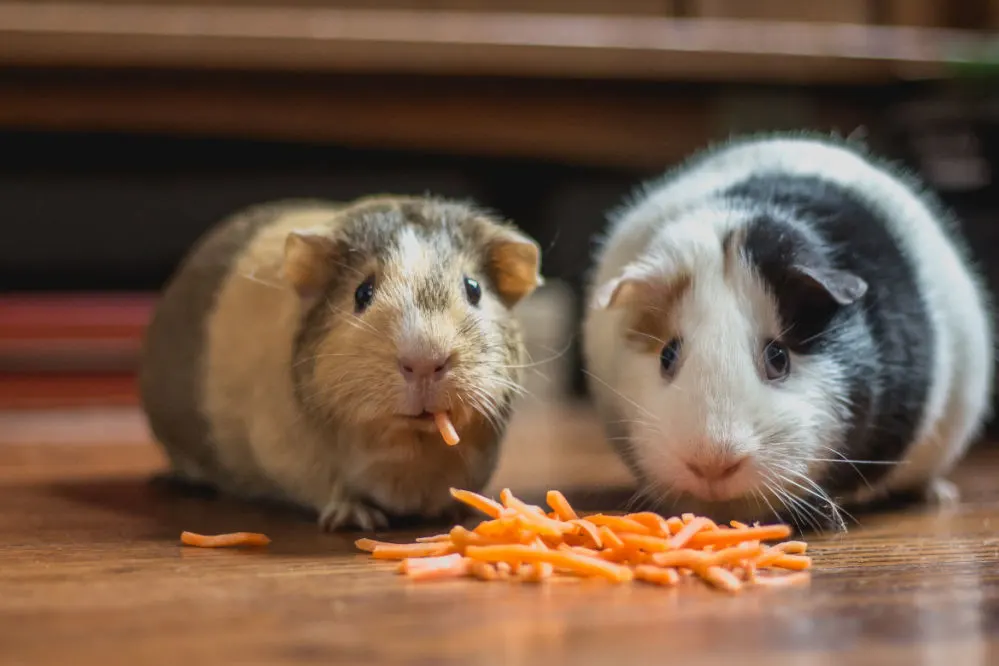
How to measure your guinea pig
Knowing all the above information is great and all, but it’s all for nothing if you can’t apply it. To best use it, you’ll need to track the measurements of your guinea pigs every now and then to ensure they’re growing healthily.
The most practical way to measure your guinea pig is through its weight. If they’re weighing a figure that’s an outlier from the average, it may mean something is wrong. You’ll need to contact your vet whether they’re severely over or under the recommended healthy weight.
A guinea pig’s length doesn’t indicate any health issues.
While measuring them may seem simple, it is anything but. These social critters love moving, especially when close to you or their owner, so keeping them on a scale is difficult. If you run into this issue, keep them distracted using a small treat.
Final thoughts on the size of full-grown guinea pigs
Whether you’re an aspiring guinea pig parent or you already have a guinea pig and were shocked at its rapid growth, hopefully, this guide has answered all your questions. From how big your guinea pig will get to the factors affecting their growth, everything’s been covered.
Now, get a hutch perfect for your cavy, feed them well, and watch them reach their full size. You’ll have a loving and adorable companion for years to come!
Steph Dyson is a travel journalist by trade but a lover of all small pets. She’s been a pet mum to everything from gerbils to guinea pigs, rabbits to hamsters, and fish to dogs of all shapes and sizes. She wants to share her years of experience with small pets and make Small Pet Guides the go-to website for pet owners seeking information and care advice.

